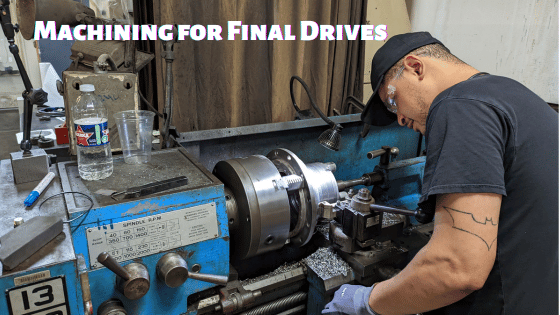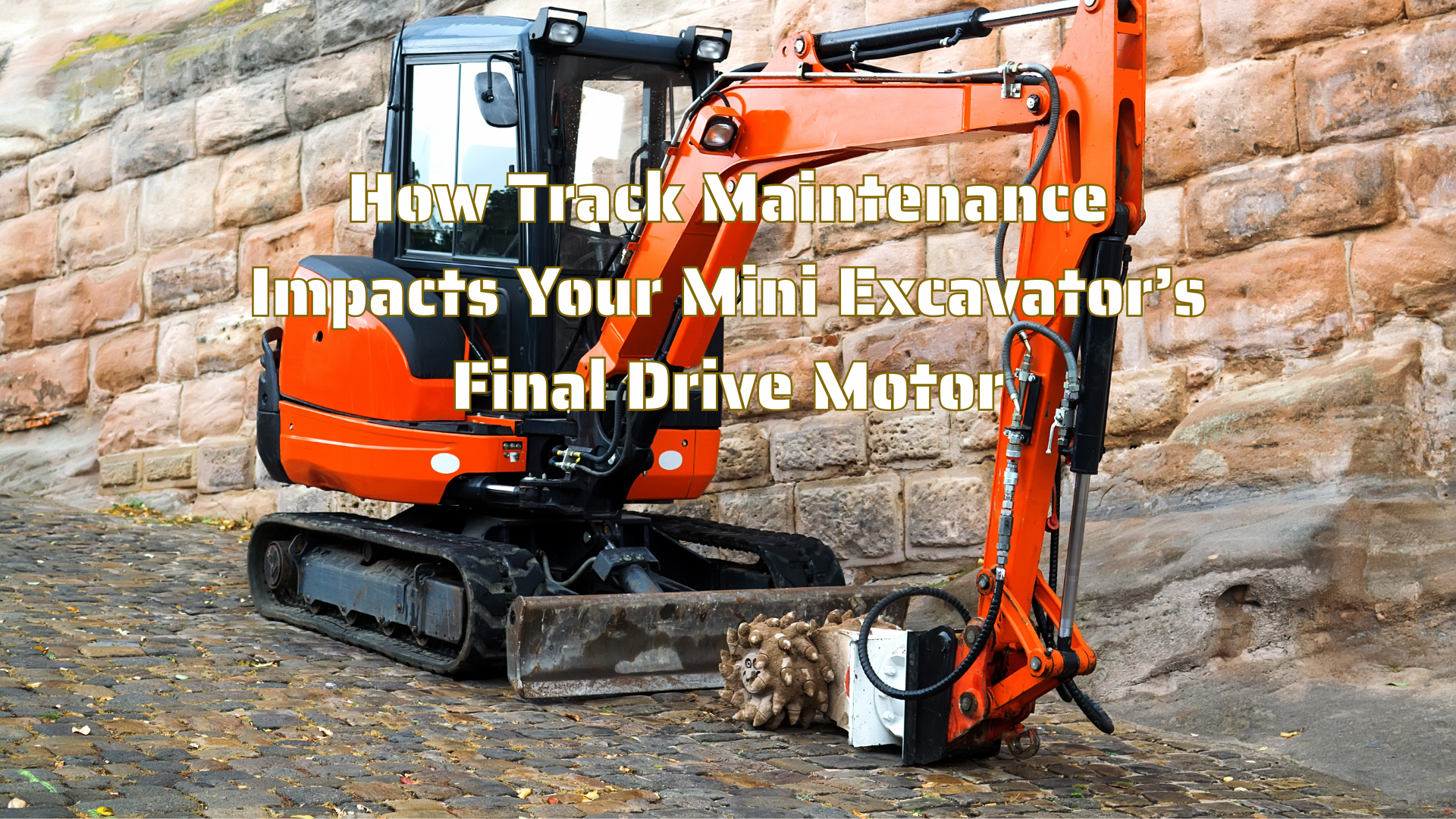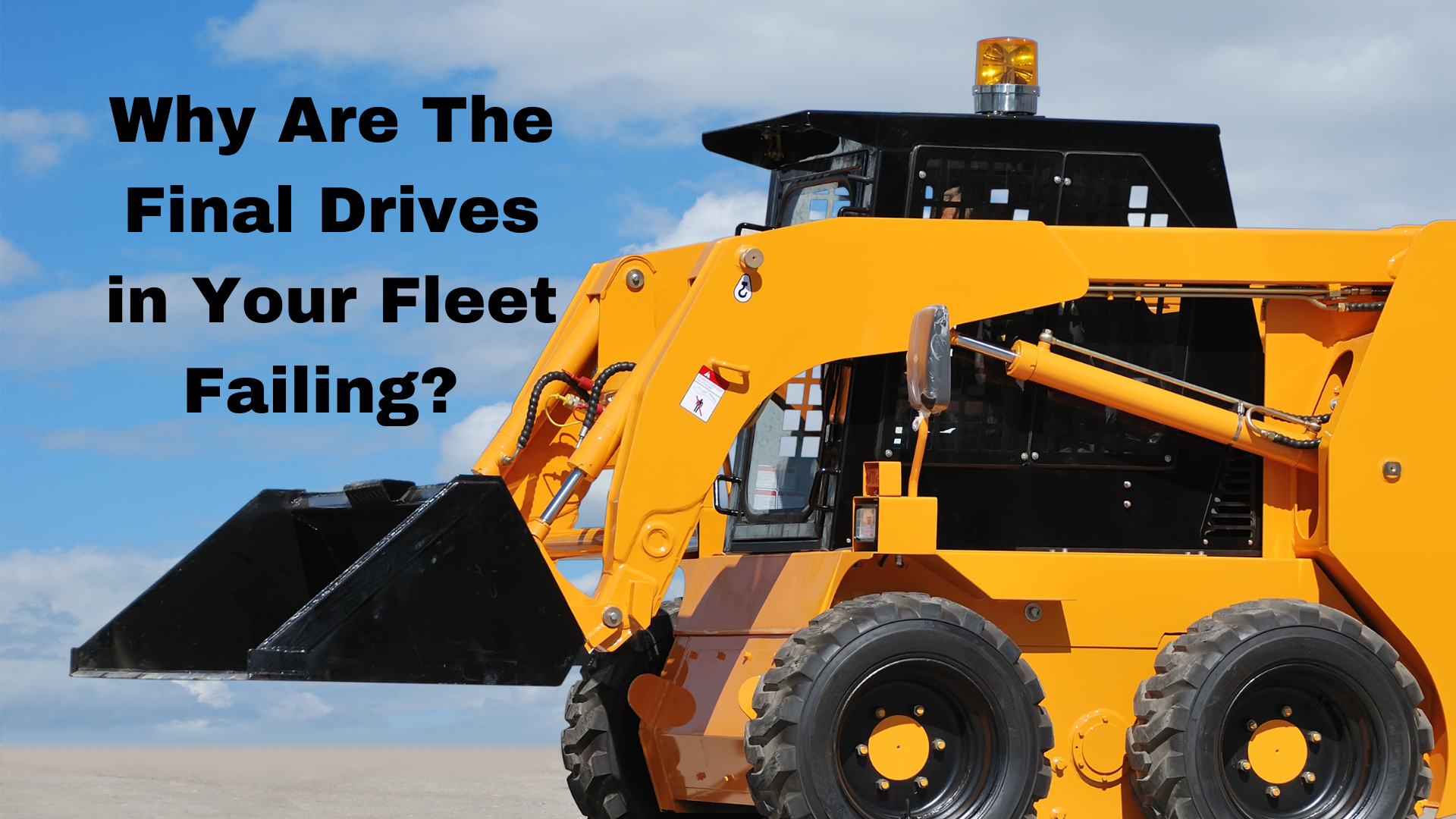Machining for Final Drives
Posted by Dr. Sara McCaslin on May 11th 2023
Machining can be used to create new parts for a final drive motor, as well as restore old parts. In this blog post, we discuss how Final Drive Parts uses machining in their shop.
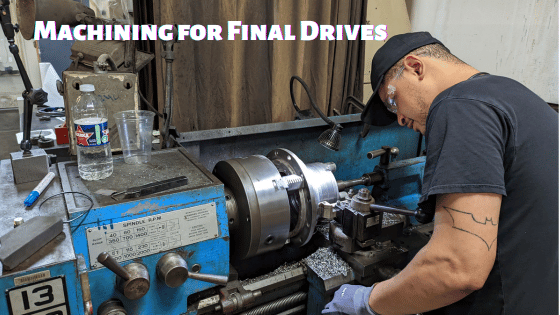
Here are a few other Shop Talk Blog posts:
- John Deere 332 Final Drive: Common Issues [VIDEO]
- What A Clogged Case Drain Means For Your Final Drives
- Basic Facts About The Bobcat 864 / T200
Types of Machining
Metal machining is shaping metal into desired shapes and sizes by removing material. It is an integral part of the manufacturing process and is used to create various products -- including components for final drive motors.
Different machining types include turning, drilling, milling, and grinding. Here’s how they differ:
- Turning describes spinning the part against a tool that shaves down or cuts the workpiece and is accomplished using a lathe.
- Drilling refers to drilling holes in the part, and while a drill press may come to mind, there are much more advanced approaches to drilling that allow very intricate holes to be made.
- Milling removes materials using a rotating tool that moves along a stationary workpiece.
- Abrasive is the removal of material through abrasion rather than cutting.
Turning
Turning produces rotational and axisymmetric parts, including tapers, threads, grooves, holes, contoured services, diameter steps, and more. Because of the high tolerances achieved with turning, it is often used to add or refine features on parts from other manufacturing processes (e.g., pieces that were cast).
Turning requires a lathe (also referred to as a turning machine), the workpiece that is being shaped, a fixture to hold the workpiece in place during the process, and the cutting tool. Fixtures, also called jigs, are often custom-made to fit specific types of workpieces or for specific turning operations. Finally, the cutting tool feeds into the rotating workpiece to cut away material.
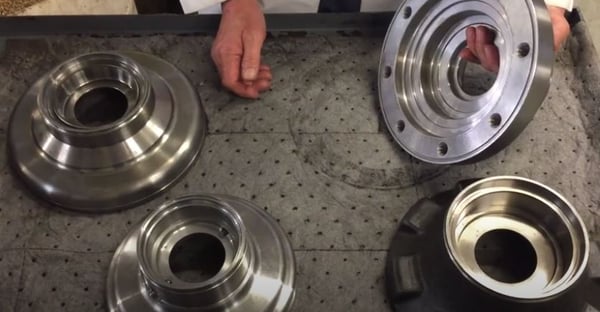
Here at Texas Final Drive, we use turning and drilling (which we’ll discuss in a moment) to make housings and hubs for machines like Bobcat T300s and T190s, for example.
Drilling
Drilling is cutting a hole of a specific depth and diameter into a workpiece. The three main tools needed for metal drilling are some type of drill press or other drilling machine, the workpiece, a fixture/jig, and the necessary drill bits and tapping tools. We use drilling when manufacturing hubs and for various aspects of rebuilding and remanufacturing, including bolt holes that have to be precisely placed.
Milling
Milling is a material removal process that uses cutting tools to create various features on a part by cutting away unwanted material. In milling, the workpiece is moved into a fast-rotating cutter. And as with turning, there will be a jig\fixture to hold the workpiece in the correct position, the workpiece itself, and the cutting tool.
Milling is used to produce parts that are not axially symmetric, although it can be used for manufacturing such parts but not as efficiently. Milled parts can have various features ,such as slots, pockets, holes, and complex 3D surface contours.
We use machining for manufacturing hubs and main housings in-house, and for finishing other parts to achieve the correct dimensions and surface finish.
Abrasive Machining
Abrasive machining differs from turning, milling, and drilling in that it uses tiny abrasive particles to remove metal instead of a cutting tool. It serves for several purposes, including achieving a specific surface finish or flatness. Processes include grinding, lapping, and honing. Abrasive machining is also an important part of our manufacturing processes, where we use it to restore surface finishes and flatness.
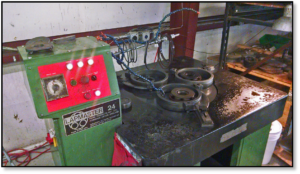
CNC Machining
CNC machining allows for precise and automated machining of metal parts. CNC machines can create complex shapes and designs with high accuracy and repeatability, automating machining processes while maintaining excellent precision.
There are a couple of different approaches to CNC machining. First, a machinist uses CAD (Computer-Aided Design) to generate a 3D model of the created part. This alone takes some serious skill that includes experience with the software package, an efficient approach to creating an accurate part, and a good understanding of dimensions and tolerances, just to name a few. At this point, checking for interference between overlapping components and resolving them is essential. And don’t forget to verify the size and placement of holes (e.g., bolt holes).
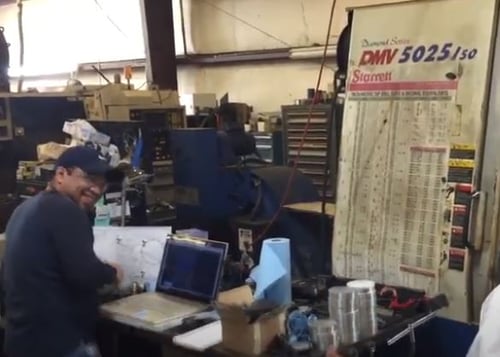
From there, the CAM (Computer-Aided Manufacturing) software takes the 3D model and determines what material needs to be removed to create it. From there, based on the tool sizes the machinist selects, it generates a set of tool paths. These tool paths are in a language that a CNC (Computer Numerical Control) machining system can understand. The language is referred to as M-code.
However, it is essential to remember that many skilled machinists can develop tool paths and write M-code without using CAD/CAM.
Conclusion
We have full CAD/CAM facilities and machine shop here at Texas Final Drive, and they are an integral part of creating and repairing critical final drive components.

